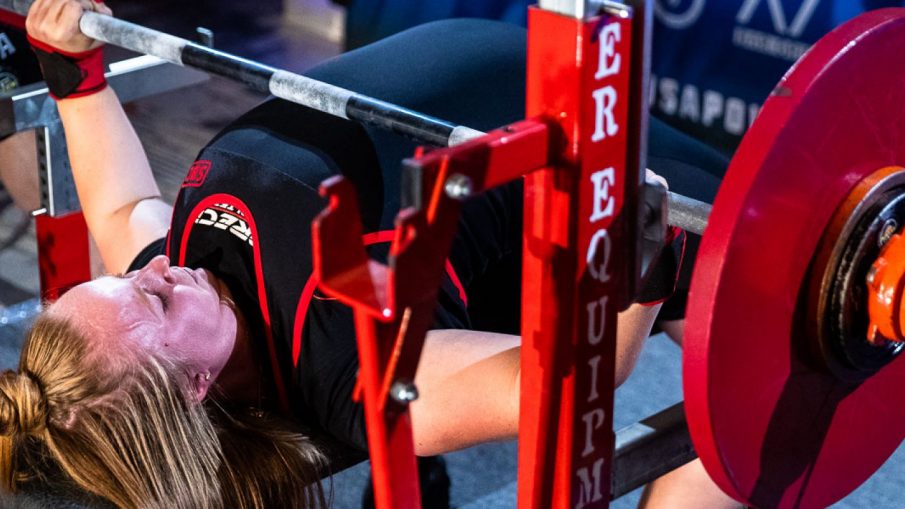Written by: Kevin Cann
I have seen a lot of posts recently discussing training frequency. I posted a video on the Precision Powerlifting YouTube page discussing what makes a quality coach. I discussed the importance of formal education in this field and experience as an athlete.
Of course, there are exceptions to the rule, but as I witness more and more of what occurs on the internet with “coaches” the more I believe the exceptions are few and far between. When I say education, I mean education within strength and conditioning, not physical therapy, not accounting, not computer engineering, but strength and conditioning.
Understanding those fundamentals is very rarely done outside of formal education. Louie Simmons was reading textbooks on his own to learn. Based off of the information I see, this is not true for the majority of coaches. They regurgitate someone else’s words that they trust and think that that is good enough. It is not. 6 years of formal education in this field was critical for me as was the over 30 years as an athlete and the 17 years of coaching experience, including my time in a division 1 weight room.
Eastern coaches are sports scientists. Many were Olympic athletes first. They have the experience and the education to develop high level talent. I believe this is a big factor in the success of those countries.
Experience is also critical, and in some cases can make up for a lack of formal education. However, we are not talking about 3 years lifting weights and doing a couple local meets. I am talking real experience. Someone that grew up with the sport or has been competing for over 20 years has experience. A good total is not experience. 5 years is not experience either. I am talking real experience where wisdom can be developed.
These “coaches” are discussing training frequency as if there is a right and wrong amount of it. Kimberly Walford, Shane Hammond, and Jason Beck are all world champions that trained 3 days per week. There are many others too. These 5 to 6 day training programs are completely unnecessary and unwarranted for a lifter with very limited experience.
Higher frequency programs were given to more experienced lifters in the Eastern European countries. These lifters go through schools where they are developed over the course of their lives. They are introduced to various sports and their training consists of primarily GPP work. By the time they receive these higher frequency, more specific programs, they have far less weaknesses and higher levels of skill than the majority of people taking up powerlifting.
We see the success of these high frequency programs because they are given to the cream of the crop in these countries. We then see some American lifters do very well on them. The lifters that do well tend to have had a very strong athletic background leading into the sport of powerlifting. This is not the average person. In the beginning we want to utilize the least amount of volume to get results. We also want to develop the areas necessary for us to maximize leverages on the platform. Not just make our strengths stronger.
To do this, the lifts can’t be the primary focus all of the time. This is especially true for developmental lifters. If you can’t podium at nationals, you are developmental. If you just continue to focus on the lifts in the positions that you are most comfortable, you will not be able to properly develop weaker areas. Remember, the Russians developed these over the course of the earlier years. Same with the Americans with strong sports backgrounds.
Beginners may see early success in a program such as this, but it will not set them up for long term success, as those weaknesses will need to be addressed at some point. This can lead to eventual frustration and the lifter quitting the sport.
Frequency can be a very valuable training variable. We manipulate it within each phase of training. We start with lower frequency and build it up over a larger macrocycle. Think Russian system condensed into a 6-month training cycle. Then we rinse and repeat.
There is not this right or wrong amount of frequency for a training program. There needs to be the right number of exposures at the right times and these exposures need to be specific to the current goals of training. Far out from a competition, the focus needs to move away from the competition lifts and move towards building up weaker areas.
I am a bit more aggressive with this and focus on that developmental year-round with my lifters. These things take time to develop and moving away from them for large blocks of time can increase the time necessary to build these areas. It can easily turn into 1 step forward, 2 steps backwards, or vice versa if you are lucky.
Now, if a lifter has an opportunity to podium at nationals, that is a different story. You might decide there that what they have is good enough and lets go get this. They still need to address weaknesses, but that can be done in a much more competition lift, specific way.

